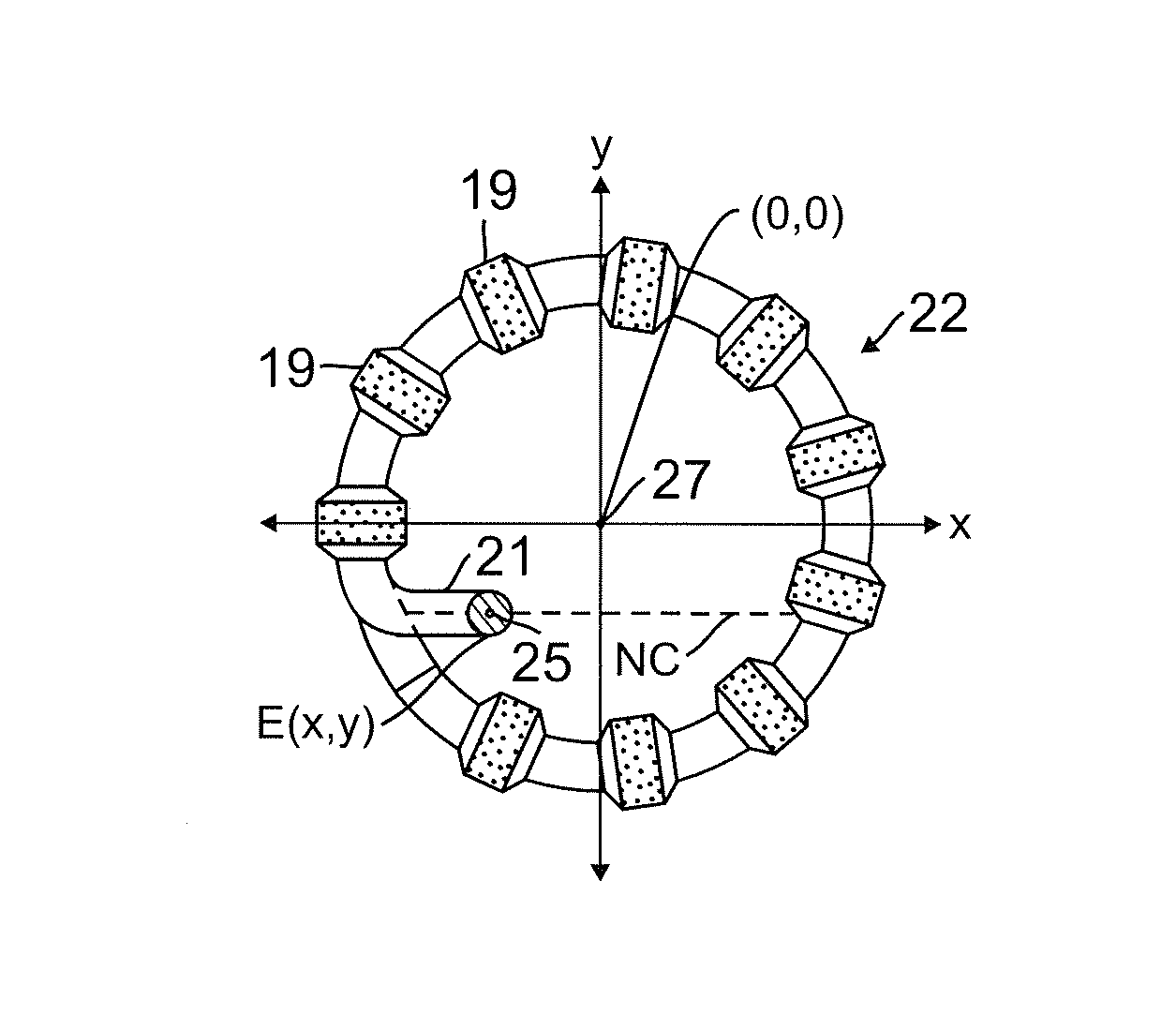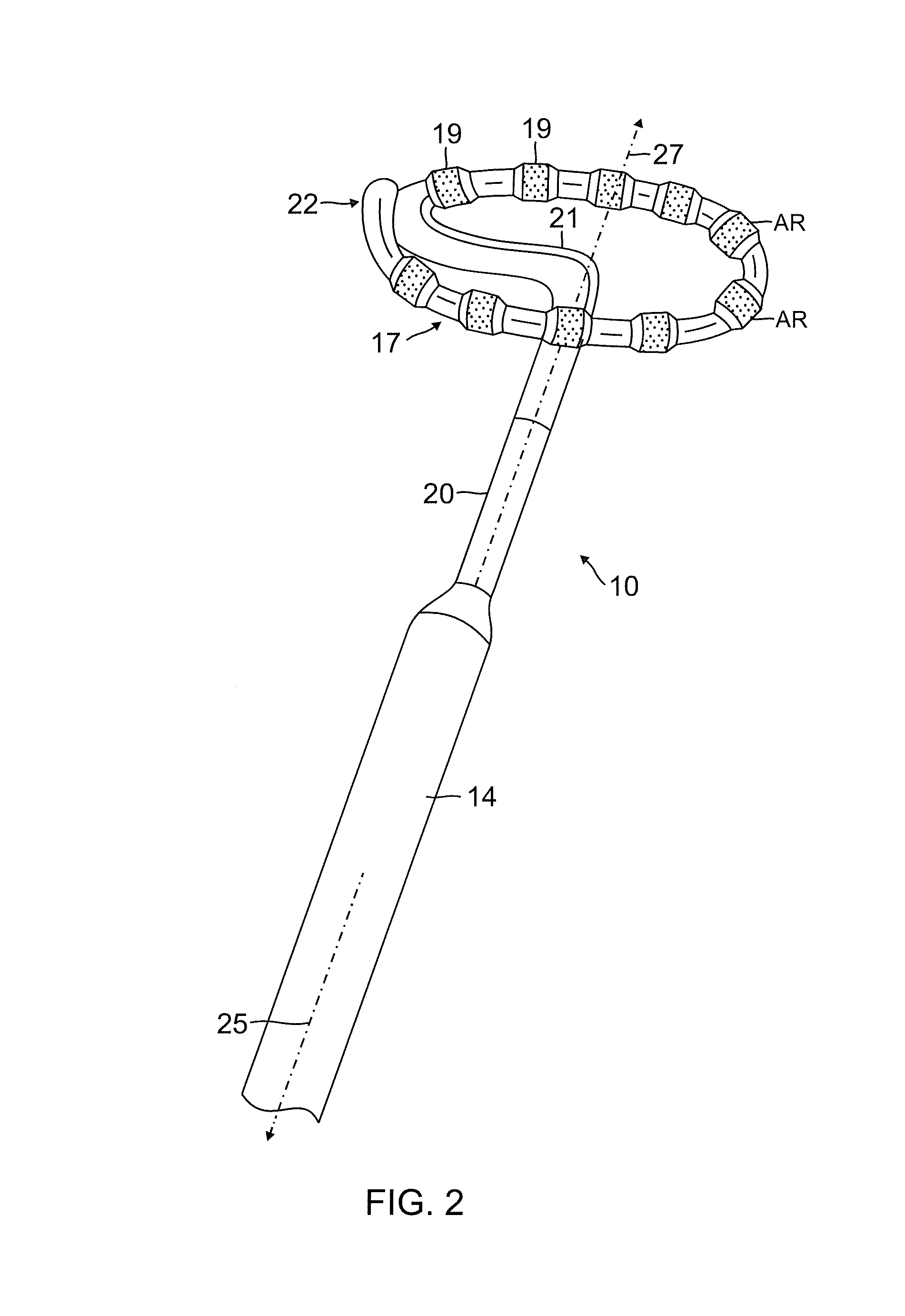Catheter with variable arcuate distal section
a catheter and distal section technology, applied in the field of catheters and catheters having distal sections, to achieve the effect of improving surface contact, better, and more controlled load distribution
- Summary
- Abstract
- Description
- Claims
- Application Information
AI Technical Summary
Benefits of technology
Problems solved by technology
Method used
Image
Examples
Embodiment Construction
[0047]Lasso catheters, as described above, may be used for mapping and ablating tissue along an arc or curve surrounding an anatomical structure, such as the ostium of a pulmonary vein. The lasso is generally made thin and flexible, for purposes of maneuverability, with large ring electrodes to minimize electrical resistance. U.S. patent application Ser. No. 12 / 345,720, now U.S. Patent Application Publication No. 2010 / 0168548, filed Dec. 30, 2008, which is assigned to the assignee of the present patent application and whose disclosure is incorporated herein by reference, describes an alternative design in which the lasso is thicker and stiffer. Even so, operators can find lasso catheters to be difficult to maneuver within the heart and position in such a way that the entire circumference of the lasso is in contact with the tissue, as is desirable for effective pulmonary vein isolation.
[0048]Embodiments of the present invention that are described hereinbelow provide probes, such as c...
PUM
 Login to View More
Login to View More Abstract
Description
Claims
Application Information
 Login to View More
Login to View More - R&D
- Intellectual Property
- Life Sciences
- Materials
- Tech Scout
- Unparalleled Data Quality
- Higher Quality Content
- 60% Fewer Hallucinations
Browse by: Latest US Patents, China's latest patents, Technical Efficacy Thesaurus, Application Domain, Technology Topic, Popular Technical Reports.
© 2025 PatSnap. All rights reserved.Legal|Privacy policy|Modern Slavery Act Transparency Statement|Sitemap|About US| Contact US: help@patsnap.com



